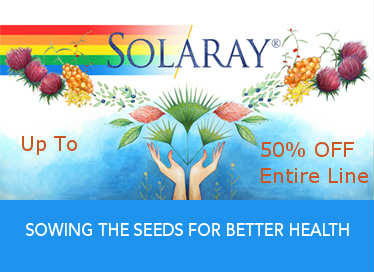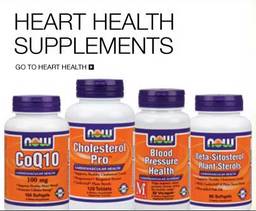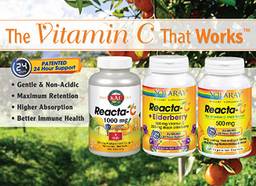|
Search Term: " Apollo "
Horse Radish
Date:
October 28, 2009 11:39 AM
Horseradish has been cultivated since ancient times. The Delphic Oracle in Greek mythology told Apollo that horse radish was worth its weight in gold. Horseradish was known in Egypt by 1500 BC and has been used by Jews from Eastern Europe traditionally in Passover. The plant is discussed by Cato in his treatises on agriculture. It is thought that horseradish is the plant known as Wild Radish by the Greeks. Both the root and leaves of the horseradish plant were used as a medicine during the Middle Ages, with the root used as a condiment on meats in Germany, Scandinavia, and Britain. This herb was taken to North American during Colonial times. It is not certain as to where the name horseradish come from. Some believe that it derives by misinterpretation of the German Merettich as mare radish. Others think the name comes from the coarseness of the root. The common thought in Europe is that it refers to the old method of processing the root called hoofing, in which horses were used to stamp the root tender before grating it.
For at least two thousand years, horseradish has been cultivated. It was brought to America by early settlers and used to treat conditions such as pain from sciatic, colic, and intestinal worms. Horseradish provides antibiotic action that is recommended for respiratory and urinary infections. The volatile oil in horseradish has the ability to work as a nasal and bronchial dilator. Internally, it has been used to clear nasal passages, alleviate sinus problems, help with digestion, work as a diuretic, aid with edema and rheumatism, and cleanse various body systems. Also, horseradish has been used to stimulate digestion, metabolism, and kidney function. The root of the horseradish plant can be used to provide antibiotic, antineoplastic, antiseptic, bitter, caminative, diaphoretic, digestive, diuretic, expectorant, hepatic, parasiticide, mild purgative, rubefacient, sialagogue, stimulant, and stomachic properties. The primary nutrients found in this herb are calcium, iron, phosphorus, sodium, and vitamins A, B-complex, and P. Primarily, horseradish is extremely beneficial in dealing with loss of appetite, circulation, coughs, edema, excessive mucus, sinus problems, internal and skin tumors, and worms. Additionally, this herb is very helpful in treating arthritis, asthma, bronchitis, congestion, gout, jaundice, kidney problems, irritated membranes, neuralgia, palsy, rheumatism, skin conditions, water retention, and wounds. For more information on the many beneficial effects provided by horseradish, please feel free to contact a representative from your local health food store with questions.
(https://vitanetonline.com:443/forums/Index.cfm?CFApp=1&Message_ID=2107) The Growing Organic Market Place
Date:
June 26, 2007 01:51 PM
It probably doesn’t come as much of a shock that the market for organic produce is growing—estimated by various sources at about 20 percent a year. What may be surprising is that the organic food market, which generated about $13.8 billion last year, represents only about 2.5 percent of the total U.S. food consumption. While those of us involved in the natural products industry or natural healthcare take for granted the advantages of organic products over “traditional” ones, there is a pressing need to mobilize resources in order to meet the consumer demand for pesticide-free foods. Currently, only 0.2 percent of the U.S. farmland is organic. The other 99.8 percent produces food utilizing the high-production, low-nutrient and flavor lacking industrial chemical methods we grew up with—the same tradition that drove consumers to seek out organic produce in the first place. The picture isn’t any better in Canada, according to the Canadian Organic Growers Association, where only 1 percent of the food grown there is organic. This of course raises the question as to how we are going to satisfy this increasing consumer demand. In a word: imports. We already import more than 10 percent of the organic food we eat. But perhaps the figure of greater interest is that we consume 42 percent of the worldwide organic food supply, leaving only 58% for world’s non-U.S. residents. In this enlightened era in which we understand the downside of processed foods, chemical residue and the portent of global warming, it’s hard to understand why we don’t muster our great resources and legendary spirit to launch a program to address these issues—like JFK’s Apollo Project, which put a man on the moon in under a decade using computers less powerful than are commonly found on our desktops today. While we ponder the question, there are people of good will and strong conviction who are working, albeit with limited resources, to do something about it. one group is working on remineralizing the earth. We are proud to be supporters and friends and we think you will find their concept as exciting as we do. -Peter Gillham – editor.
(https://vitanetonline.com:443/forums/Index.cfm?CFApp=1&Message_ID=1568) | ||||||||||||||||||||

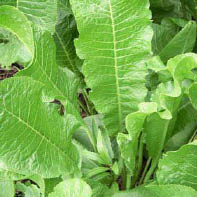 The horseradish plant is a perennial plant that is part of the Brassicaceae family, which includes mustard, wasabi, broccoli, and cabbages. Native to southeastern Europe and western Asia, the plant is popular around the world today. The horseradish plant grows up to five feet tall and is mainly cultivated for its large, white, tapered root. The intact horseradish root has hardly any aroma. However, when cut or grated, enzymes from the damaged plant cells break down to produce allylisothiocyanate, which often irritates the sinuses and eyes. Once grated, if the plant is not mixed with vinegar or used immediately, the root darkens and loses its pungency. It quickly becomes unpleasantly bitter when exposed to air and heat.
The horseradish plant is a perennial plant that is part of the Brassicaceae family, which includes mustard, wasabi, broccoli, and cabbages. Native to southeastern Europe and western Asia, the plant is popular around the world today. The horseradish plant grows up to five feet tall and is mainly cultivated for its large, white, tapered root. The intact horseradish root has hardly any aroma. However, when cut or grated, enzymes from the damaged plant cells break down to produce allylisothiocyanate, which often irritates the sinuses and eyes. Once grated, if the plant is not mixed with vinegar or used immediately, the root darkens and loses its pungency. It quickly becomes unpleasantly bitter when exposed to air and heat. 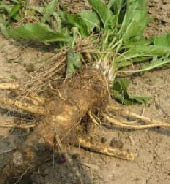 This herb helps promote stomach secretions to aid in digestion. Horseradish can be used as a compress for neuralgia, stiffness, and pain in the back of the neck. Additionally, this herb can be used as a parasiticide.
This herb helps promote stomach secretions to aid in digestion. Horseradish can be used as a compress for neuralgia, stiffness, and pain in the back of the neck. Additionally, this herb can be used as a parasiticide. 
